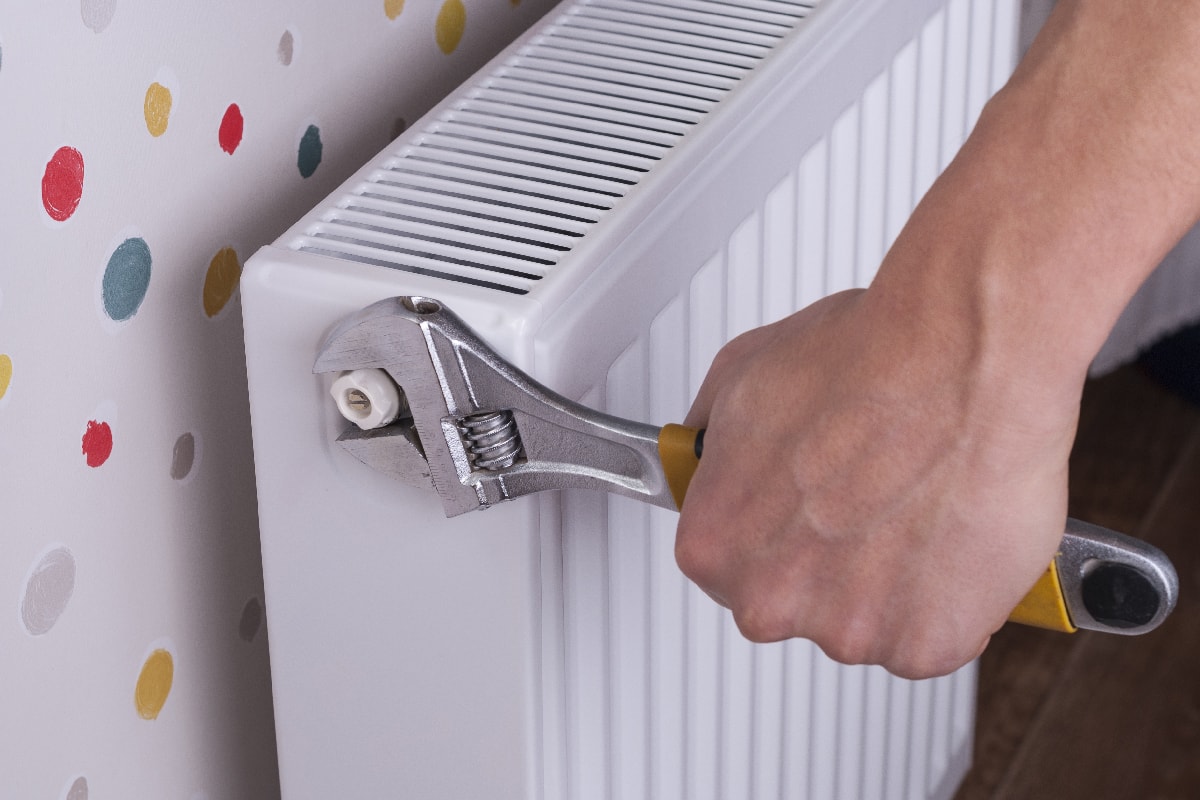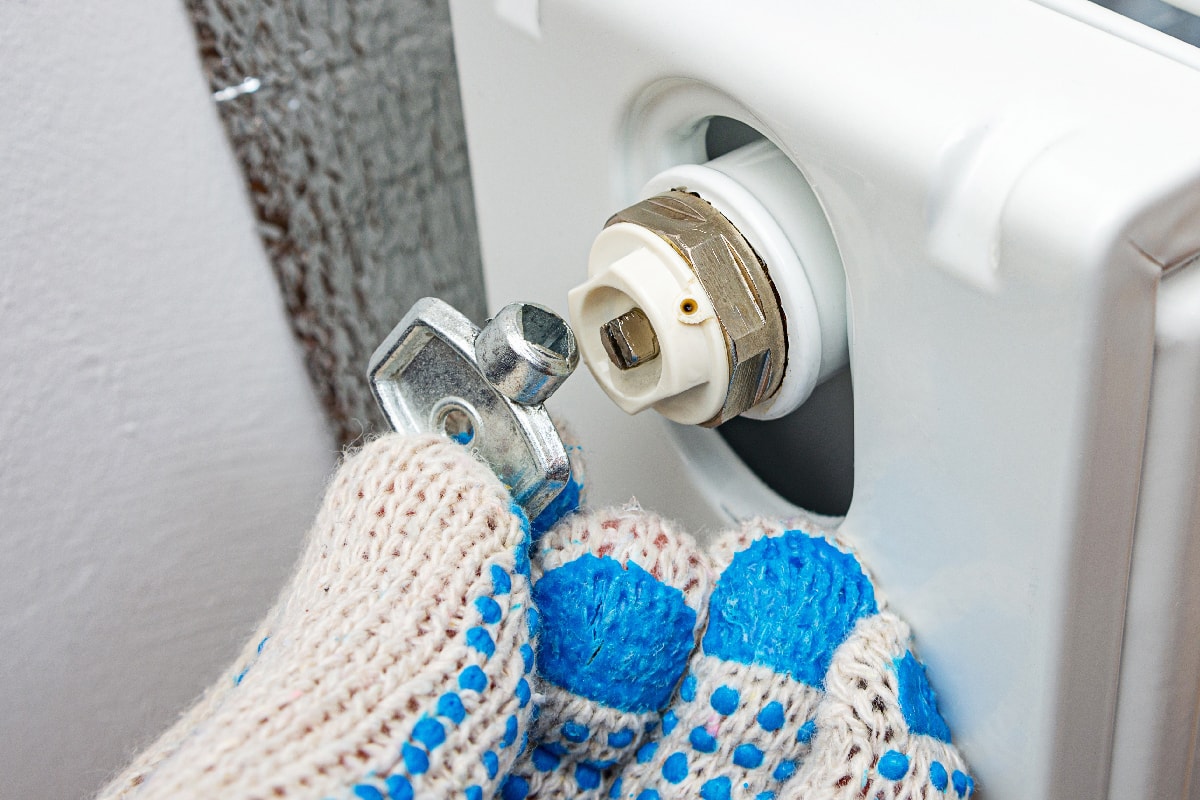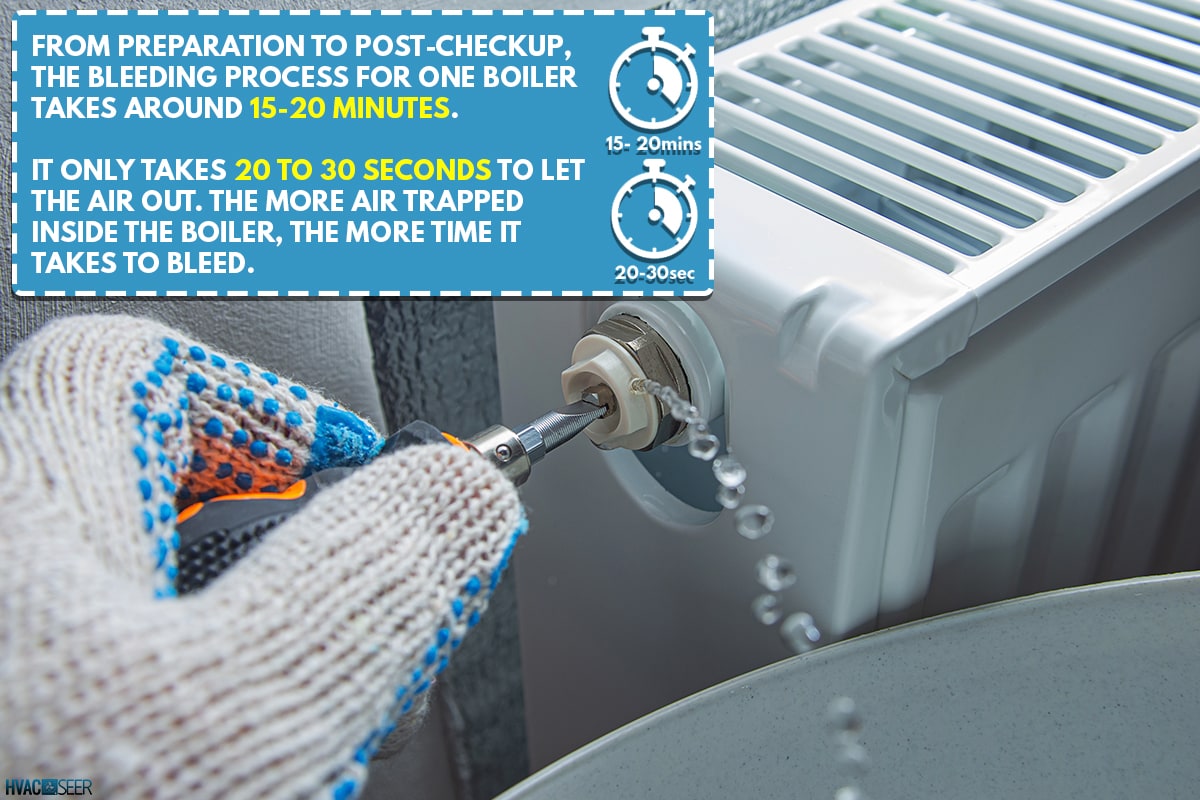Bleeding a boiler is necessary if air is trapped inside the central heating system. Using bleeder valves can facilitate the purging of the air, but you might not have these at home. Based on our research, this post will teach you how to bleed a boiler without bleeder valves.
You can bleed a boiler without bleeder valves by loosening the compressor joint. The joint is where the towel rail joins the boiler.
With a wrench, you can loosen the nut of the compressor joint. Allow the trapped air to leave the boiler. Another way to bleed a boiler is to install a self-drilling valve.
If you let the trapped air out of the boiler, the heating system will work properly. You should follow the correct bleeding process to improve the boiler's efficiency. Read on to learn more about the process.
Bleeding A Boiler Without Bleeder Valves
Bleeder valves help to get rid of the air inside a boiler. It is possible to bleed the boiler of a baseboard heating system without bleeder valves.
When you turn on the heating unit, you must first identify which boilers need bleeding. Be careful when inspecting them because the units can be very hot.
When inspecting the heating unit, you need to turn it on. Then check the boiler farthest from the water boiler going to the baseboard radiator.
Observe which boiler remains cold on top or creates noise. Then you can proceed with bleeding the boiler.

If you don't have valves, you will need a wrench, bowl, or towel. Follow the process below:
- Inspect the boilers that have cold patches on the top.
- Turn off the boiler and let it cool down.
- Locate the compression joint. You will need to find the joint where the towel rail meets the boiler.
- With the wrench, loosen the nut of the compression joint. You'll know the bleeding has started when you hear a hissing sound. Catch any water that sprays from the boiler with a bowl or towel.
- Wait until you don't hear the hissing sound any longer. That means all the trapped air is out.
- Tighten up the nut as soon as the hissing stops. This step is important to prevent the loss of water in the boiler.
- Turn on the boiler for at least an hour to make sure the heat distribution on top is even. Check the water pressure gauge, which should be between 1.5-2 bars. The range should be 12-15 pounds or 20-25 feet.
Do the same process for other boilers that require bleeding. You can also try the other methods of bleeding a boiler covered below.
Other Ways To Bleed A Boiler
You can bleed a boiler manually or automatically. It is up to you to choose which is more feasible and convenient.
Manual

Another way to bleed the boiler is by using a bleed key or socket valve key. Use the bleed key if your heating unit has one. If you don't have one, you can use an Allen key, pliers, screwdriver, or wrench.
You can buy a standard radiator key from a hardware store.
Click here to buy this product on Amazon.
Insert the key into the socket valve and turn it counterclockwise to let air and water flow out of the boiler. When the air stops coming out, turn the key clockwise to close the valve.
Automatic
Your heating unit may have a pre-installed automatic air purge device. The device is either on top of or near the boiler.
The valve has a float that triggers a valve plug on the top. The rising water level triggers the float. Then the valve displaces air from the boiler while maintaining the pressure.
There is also a plug seal that prevents the escape of water from the unit. You can regulate the flow by adjusting the screws. Automatic air-release valves are also available separately.
Click here to see this product on Amazon.
After bleeding, check the water pressure and any cold patches on the top. If you feel cold patches on the bottom, there might be sediment build-up. In that case, the heating unit needs some flushing.
If there are problems after you perform the process, contact a professional for help with your heating system.
Is Bleeding A Boiler Necessary?

Bleeding a boiler is necessary to avoid problems with your heating system.
The trapped air can oxidize the boiler ducts. You will not get the correct temperature from your heating unit, and the heat will be inconsistent. You will also spend more on your electric bill.
Look for the following signs when you use your heating unit:
- Bubbling or gurgling noises
- Cold patches on the top of the boiler or radiator
- A damp feeling inside the house
- Loss of heat even if the boiler is on
- The baseboard heater is not heating normally
If any of these signs are evident, you should purge the air from the boiler.
How Does Air Get Trapped In The Boiler?
Air can get trapped in the oil line of a boiler. The three main reasons are the following:
- Air can get trapped when a water pump is installed above the water supply tank.
- The development of rust and sludge can cause hydrogen build-up inside the system.
- Frequent re-pressurizing of the boiler will cause leaks and air build-up.
You should address the main reasons first to prevent air build-up. By doing so, you can minimize the frequency of bleeding.
How Often Should You Bleed A Boiler?

You should bleed a new boiler at least once a year. After installation, you should bleed a new boiler prior to use. If the boiler is old, you should bleed it twice a year.
You should perform routine maintenance on your boiler to keep your heating unit efficient.
Do not wait for the signs to appear before you take action. If you don't take proactive measures, your heating system will have more problems.
The best time to bleed a boiler is during the fall, right before the cold months arrive.
How Long Does It Take To Bleed A Boiler?

From preparation to post-checkup, the bleeding process for one boiler takes around 15-20 minutes.
It only takes 20 to 30 seconds to let the air out. The more air trapped inside the boiler, the more time it takes to bleed.
The process will take longer if you want to achieve the right water pressure after the bleeding.
You might have problems with the heating system if the top of the boiler still has cold patches. Tweaking the unit to get the right temperature adds to the total bleeding time.
Can You Bleed A Boiler When It's On?
You shouldn't bleed a boiler when the heating system is on. You should turn off the boiler when you need to bleed it.
You'll also need to turn off the heating system and let it cool down to avoid injuries, such as burns. The boiler could expel hot water, so you should be careful when bleeding the unit.
Tips For Maintaining A Boiler
After the bleeding process, you should take steps to keep your boiler in good condition.
Trapped air is not only the cause of the cold patches on the boiler. Dust can accumulate inside the ducts, affecting the heating system's performance.
Here are some tips for taking care of your boiler:
- Schedule an annual boiler servicing
- Clean the boiler regularly
- Check for cold spots
- Powerflushing
- Maintain the required boiler water pressure
- Listen to the noises coming from the boiler
- Observe proper ventilation
For technical issues with the heating system, you should ask for help from a professional.
In Summary
It is possible to bleed a boiler without bleeder valves. All you need is a wrench to loosen the connecting joint.
You will hear a hissing sound when the air flows out. After the air flows out, you should immediately tighten the joint. You can also bleed the boiler using the bleed key or an automatic bleeder valve.
After you let the air out, you should check the water pressure and any cold zones on top of the boiler. The whole boiler bleeding process will take you around 15-20 minutes.
Bleeding is essential for keeping your home's heating unit in good working condition. You will feel more warmth in the colder months with regular boiler bleeding, even without bleeder valves.
If you found this post helpful, check out these related articles:


